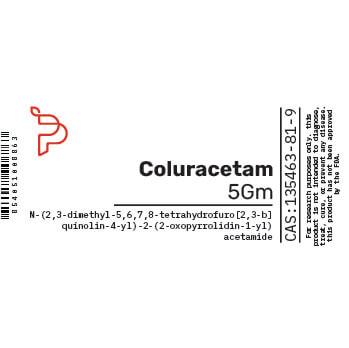Fasoracetam
Fasoracetam is a nootropic compound in the racetam family. It was developed in the 1990s and is currently undergoing numerous studies and trials to determine its efficacy as a cognitive enhancer.
What is Fasoracetam?
As a member of the racetam family of nootropics, fasoracetam (N(5-Oxo-D-prolyl)piperidine) is a synthetic analog of the original racetam, piracetam. Fasoracetam and its mechanism of action are not currently understood.
Fasoracetam Uses
Fasoracetam is sometimes used as a nootropic for cognitive enhancement in the same manner as other racetams.
Fasoracetam Benefits
Pre-clinical animal studies suggest that fasoracetam may do the following:
Increase acetylcholine release, uptake, and GABAb.[1]
Activate and modulate metabotropic glutamate receptors (mGluR).[2]
Fasoracetam Side Effects
Clinincal trials have shown that Fasoracetam has a well tolerated safety profile. [1]
Fasoracetam may interact with phenibut, increasing the body’s response to phenibut. Large doses of Fasoracetam (>1g/day) may cause bradycardia. [3]
Sources:
1. Moskowitz, D. H. (2017). Finding the genetic cause and therapy for Adhd, autism & 22q: a journey into precision medicine that could affect millions worldwide. New Jersey: BookBabyISBN: 1483590984, 9781483590981.
2. Elia, J., Ungal, G., Kao, C., Ambrosini, A., Jesus-Rosario, N. D., Larsen, L., … Hakonarson, H. (2018). Fasoracetam in adolescents with ADHD and glutamatergic gene network variants disrupting mGluR neurotransmitter signaling. Nature Communications, 9(1). doi: 10.1038/s41467-017-02244-2
3. Merchan, C. (2016). Phenibut Overdose in Combination with Fasoracetam: Emerging Drugs of Abuse. Journal of Clinical Intensive Care and Medicine, 001–004. doi: 10.29328/journal.jcicm.1001001













Reviews
There are no reviews yet.